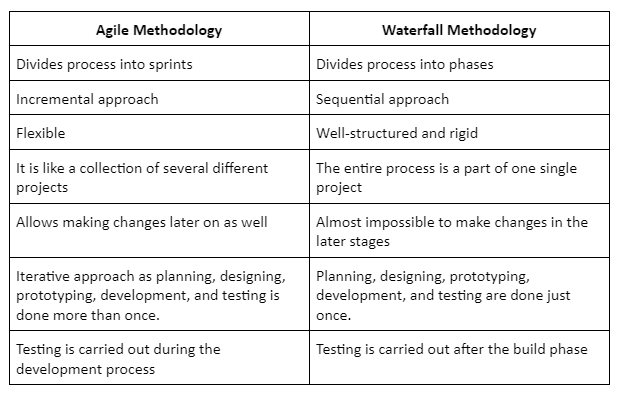Begin your job search early and maintain a well-organized approach. Research potential career paths, companies, and job opportunities before graduating. Establish a job search plan with specific goals, such as applying for a certain number of positions each week. Utilize your network effectively. InRead more
Begin your job search early and maintain a well-organized approach. Research potential career paths, companies, and job opportunities before graduating. Establish a job search plan with specific goals, such as applying for a certain number of positions each week.
Utilize your network effectively. Inform your professors, family, friends, and alumni about your job search. Participate in industry gatherings and become a member of professional associations to establish important connections.
Craft your resume and cover letter to suit the specific job and company. Tailor each application by emphasizing relevant skills, experiences, and accomplishments that align with the job description.
Utilize online job portals and company websites to your advantage. Use keywords to search for appropriate job listings on platforms such as LinkedIn, Indeed, and Glassdoor. Additionally, make it a habit to regularly visit company websites to look for available positions.
After submitting applications and attending interviews, make sure to follow up. Send thank-you emails an After submitting applications and completing interviews, it’s important to follow up. Sending thank-you emails and politely checking on the status of your application can show your enthusiasm and proactiveness.
Stay optimistic and persistent. Job hunting can be a lengthy process, so it’s essential to commemorate small victories and view rejections as chances to refine your approach.
By using these tactics, newly graduated individuals can successfully navigate the competitive job market and enhance their prospects of obtaining their preferred positions.d politely inquire about the status of your application to showcase your interest and proactiveness.
See less



Remote Work vs. Work-On-Site: What's Better? The debate between remote work and on-site work has become increasingly prominent, especially in the wake of the COVID-19 pandemic. Both approaches have distinct advantages and challenges, and determining which is better depends on various factors, includRead more
Remote Work vs. Work-On-Site: What’s Better?
The debate between remote work and on-site work has become increasingly prominent, especially in the wake of the COVID-19 pandemic. Both approaches have distinct advantages and challenges, and determining which is better depends on various factors, including individual preferences, job roles, and organizational goals. Below, we explore the pros and cons of each model.
—
Remote Work
Advantages:
1. Flexibility:
– Employees often enjoy greater flexibility in their work hours, allowing for better work-life balance. This can lead to increased job satisfaction and productivity.
2. Reduced Commute:
– Eliminating daily commutes saves time and money, reducing stress and increasing overall well-being.
3. Cost Savings:
– Both employees and employers can save money. Employees save on commuting costs and meals, while employers can reduce overhead expenses related to office space and utilities.
4. Access to a Global Talent Pool:
– Companies can hire talent from anywhere in the world, allowing for a diverse and skilled workforce without geographic limitations.
5. Increased Productivity:
– Many remote workers report higher productivity levels due to fewer office distractions and the ability to create personalized work environments.
Challenges:
1. **Isolation and Loneliness:**
– Remote work can lead to feelings of isolation and disconnection from colleagues, impacting team dynamics and employee morale.
2. Communication Barriers:
– Lack of face-to-face interactions can result in misunderstandings and less effective communication among team members.
3. Work-Life Balance Issues:
– While flexibility is a benefit, it can also blur the lines between work and personal life, leading to burnout.
4. Dependence on Technology:
– Remote work requires reliable technology and internet access, which can be a barrier for some employees.
5. Limited Career Advancement:
– Remote employees may have fewer opportunities for networking and visibility within the company, potentially impacting career progression.
—
Work-On-Site
Advantages:
1. Collaboration and Team Building:
– On-site work fosters direct collaboration and spontaneous interactions, strengthening team dynamics and relationships.
2. Structured Environment:
– A traditional office setting provides a structured environment that can enhance focus and discipline among employees.
3.Immediate Access to Resources:
– Employees can easily access office resources, such as equipment, materials, and support from colleagues.
4. Clearer Work-Life Boundaries:
– On-site work helps maintain clear boundaries between work and personal life, reducing the risk of burnout.
5. Networking Opportunities:
– Working on-site facilitates networking and relationship-building, which can be beneficial for career advancement and professional growth.
Challenges:
1. Commute Stress:
– Daily commutes can be time-consuming and stressful, impacting work-life balance and overall job satisfaction.
2. Less Flexibility:
– On-site work often requires adherence to strict schedules, which may not accommodate individual needs or family responsibilities.
3. **Higher Overhead Costs:**
– Employers incur additional costs related to office space, utilities, and other overheads that can affect profitability.
4. **Potential for Distractions:**
– The office environment can sometimes be distracting, with noise and interruptions impacting productivity.
5. **Limited Talent Pool:**
– Companies may be restricted to hiring talent within a specific geographic area, potentially limiting diversity and skill availability.
—
Which is Better?
Determining whether remote work or on-site work is better depends on various factors:
1. Job Nature:
– Remote Work Suited For: Jobs that require deep focus, individual tasks, or those reliant on technology (e.g., software development, writing, graphic design).
– On-Site Work Suited For: Roles that involve hands-on work, collaboration, or require immediate access to resources (e.g., healthcare, manufacturing, education).
2.Company Culture:
– Organizations that prioritize flexibility, innovation, and a results-oriented approach may benefit more from remote work.
– Companies that emphasize collaboration, team cohesion, and mentorship may find on-site work more effective.
3. Employee Preferences:
– Individual employee preferences play a crucial role. Some may thrive in remote settings, while others may feel more productive and engaged in an office environment.
4. Hybrid Models:
– Many organizations are adopting hybrid models, combining both remote and on-site work. This approach allows for flexibility while maintaining team collaboration and structure.
—
Conclusion
Ultimately, neither remote work nor on-site work is universally superior; each has its strengths and weaknesses. The best approach often involves a balanced consideration of job requirements, organizational goals, and employee preferences. By understanding these dynamics, companies can create effective work environments that maximize productivity, employee satisfaction, and organizational success.
See less